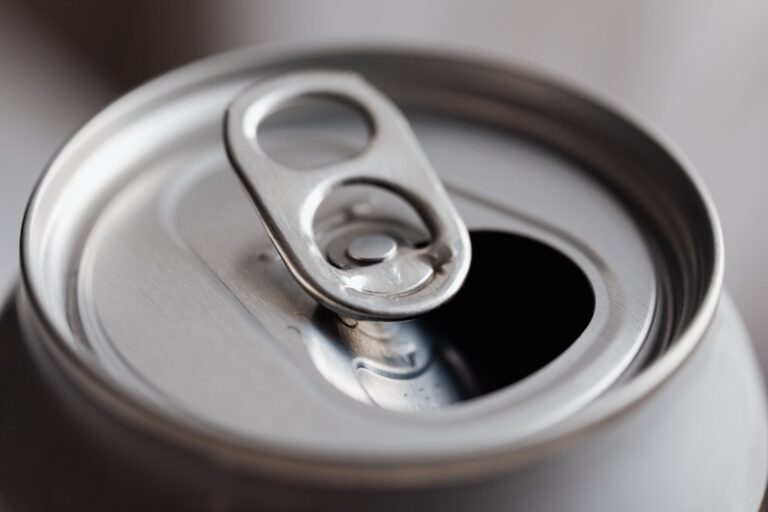Carbonated beverages are a popular beverage type that millions of people throughout the globe enjoy. However, there are restrictions that must be considered when exporting carbonated beverages.
Can Carbonated Drinks Be Shipped? Yes, carbonated drinks can be shipped, but it’s important to take precautions to prevent breakage or leakage during transit. Proper packaging and cushioning are essential to ensure that the carbonated beverages arrive at their destination intact, as changes in air pressure and handling can affect the carbonation levels.

Can Carbonated Drinks Be Shipped (Explained)
Yes, carbonated beverages can be shipped, but care must be taken to prevent spills and leaks. To stop the carbonation from escaping, carbonated drinks are often transported in airtight containers.
It is best to utilise durable packaging materials and cushioning when shipping fizzy beverages to prevent damage to the containers during transportation.
To further notify the carrier to the existence of sensitive cargo, it is advised to mark the package as “Fragile” or “Handle with Care.” It’s vital to verify with the carrier before to shipping as some may have limits on delivering carbonated beverages owing to safety concerns.
Introduction to Carbonated Drinks
Carbonated beverages, commonly referred to as soda or sparkling beverages, contain carbon dioxide gas, which adds bubbles and fizz.
People enjoy carbonated beverages for their flavour, refreshing characteristics, and energy boost. Coca-cola, lemon-lime soda, and ginger ale are among the most widely consumed carbonated beverages.

Delivery of Carbonated Beverages (Can Carbonated Drinks Be Shipped)
Due to the presence of carbon dioxide gas in carbonated beverages, transporting them could be challenging.
The pressure of the gas could cause the containers to bulge or possibly explode during shipment if not properly managed.
In addition, variations in temperature during shipping can cause carbon dioxide to escape into beverages, resulting in a loss of carbonation and flavour.
To ensure that carbonated beverages are shipped securely and arrive undamaged, it is crucial to use the suitable packaging materials and shipping procedures.
This entails using containers that can withstand the pressure of the carbon dioxide and suitably cushioning the containers to prevent damage during transit.
Shipping Supplies for Carbonated Beverages
The most important aspect of distributing carbonated beverages is the packing materials employed.
Transporting carbonated beverages requires containers that can withstand the pressure of carbon dioxide gas. This can be achieved by use glass, plastic, or metal containers.
Glass containers are a popular option for transporting fizzy beverages due to their durability.
However, they are hefty and fragile if not handled carefully. Plastic containers are lighter and more flexible than glass containers, but they are not as durable and can break or shatter when subjected to rapid temperature or pressure changes.
Metal containers are the most robust, but also the most expensive and the heaviest option.
It is crucial to consider cost, weight, and durability when choosing packaging materials for shipping carbonated beverages.
Due to its combination of low cost, light weight, and durability, plastic containers are the most popular solution for transporting carbonated beverages.
Methods of Transport Appropriate for Carbonated Beverages
In addition to selecting the proper packaging materials, it is vital to follow to specific shipping procedures in order to ensure that carbonated beverages reach their destination in good condition.
This requires adequately cushioning the containers to prevent damage during transport and avoiding rapid changes in temperature or pressure.
When transporting carbonated beverages, it is crucial to protect the containers with appropriate cushioning materials.
The containers may be wrapped in foam, bubble wrap, or paper. Cushioning materials should be placed within and around the shipping box and its contents to provide additional protection during shipment.
In addition, it is crucial to safeguard the containers from sudden changes in temperature or pressure. This can be achieved by storing the containers in a cool, climate-controlled environment and avoiding direct sunlight and heat sources during shipment.

Concluding
Due to the existence of carbon dioxide gas, exporting carbonated beverages can present challenges.
However, it is possible to assure that carbonated beverages reach in good condition provided the proper shipping materials and methods are utilised.
By selecting suitable containers and adequately cushioning them during transit, you may prevent damage to the containers and preserve the carbonation and flavour of the beverages.
In addition, it is crucial to adhere to fundamental shipping regulations, such as preventing sudden changes in temperature or pressure and storing containers in a cool, temperature-controlled environment.
By sticking to these instructions, you can ensure that your carbonated beverages arrive safely and in good condition, ready to be consumed by you or your customers.
Shipping carbonated beverages is ultimately a challenging endeavour that demands proper preparation.
With the correct approach and attention to detail, it is possible to export carbonated beverages in good condition.
Following these guidelines will ensure that your carbonated beverages are transported securely and arrive in pristine shape, regardless of whether you are carrying them for personal or professional reasons.
FAQs
Can you ship carbonated drinks?
Shipping regulations for carbonated drinks vary, so it’s best to check with the shipping carrier for their specific policies.
Carbonated Beverages Packaging
Carbonated beverages are typically packaged in sealed containers like cans, bottles, or plastic containers to retain their carbonation.
Can You Ship Carbonated Drinks Overseas
Shipping carbonated drinks overseas can be challenging due to the risk of pressure changes and leakage during transit; it may require specialized packaging or precautions.
Packaging of Carbonated Beverages
The packaging of carbonated beverages is designed to keep them airtight, preventing carbonation loss and maintaining freshness.
Why Can’t You Put Carbonated Drinks in Stainless steel?
Carbonated drinks should not be stored in stainless steel containers for extended periods as the carbonation can react with the metal, potentially altering the taste and quality of the beverage.





